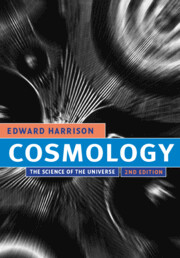Book contents
- Frontmatter
- Contents
- Preface
- Introduction
- PART I
- PART II
- 10 Curved space
- 11 Special relativity
- 12 General relativity
- 13 Black holes
- 14 Expansion of the universe
- 15 Redshifts
- 16 Newtonian cosmology
- 17 The cosmic box
- 18 The many universes
- 19 Observational cosmology
- PART III
- Appendix – Fundamental quantities
- Index
11 - Special relativity
from PART II
Published online by Cambridge University Press: 05 June 2012
- Frontmatter
- Contents
- Preface
- Introduction
- PART I
- PART II
- 10 Curved space
- 11 Special relativity
- 12 General relativity
- 13 Black holes
- 14 Expansion of the universe
- 15 Redshifts
- 16 Newtonian cosmology
- 17 The cosmic box
- 18 The many universes
- 19 Observational cosmology
- PART III
- Appendix – Fundamental quantities
- Index
Summary
Where I am not understood, it shall be concluded that something useful and profound is couched underneath.
Jonathan Swift (1617–1745), Tale of a TubNEW IDEAS FOR OLD
Old Ideas
Newtonian space and time were public property, which all observers shared in common. Its intervals of space and intervals of time separating events were absolute. They were the same for everybody. One person in an apple orchard would see an apple fall from a tree and take 1 second to drop 5 meters. Another person in motion relative to the tree also would see it drop 5 meters in 1 second, no matter how fast that person moved. Now things have changed. The old Newtonian universe, with its ideas on the fixity of intervals of space and time, is no longer the universe in which we live.
Space-and-time diagrams, displaying events and world lines, were used in the Middle Ages, and there is nothing particularly frightening or difficult about them. Until the beginning of this century they were a convenient graphical way of representing things in motion. Then came the theory of special relativity, and diagrams of this kind acquired a new physical meaning.
New ideas
The theory of special relativity emerged toward the end of the nineteenth century and was brought into final form in 1905 by the genius of Albert Einstein. It has withstood countless tests and is now in everyday use by physicists. Yet even nowadays, when we pause to reflect, the theory is as astonishing as when it first emerged.
- Type
- Chapter
- Information
- CosmologyThe Science of the Universe, pp. 206 - 219Publisher: Cambridge University PressPrint publication year: 2000

